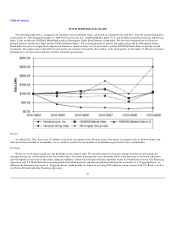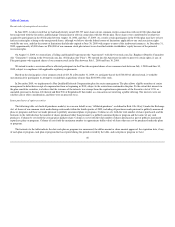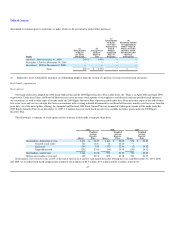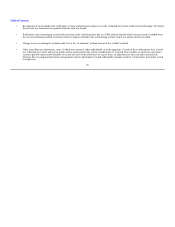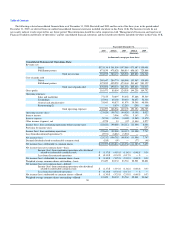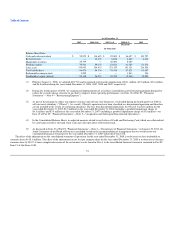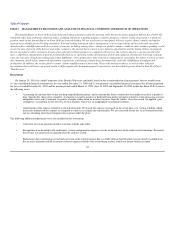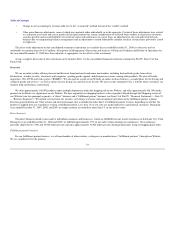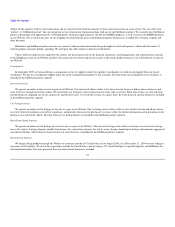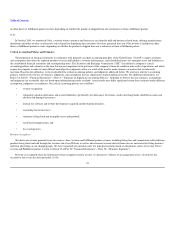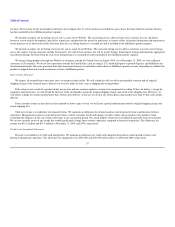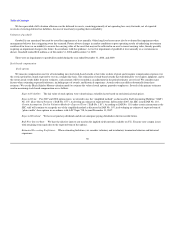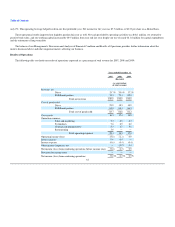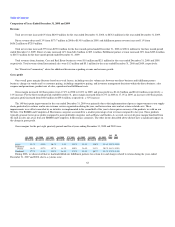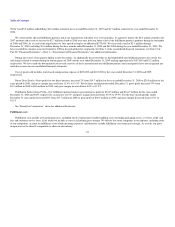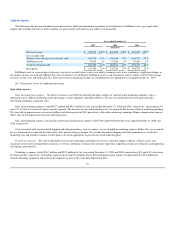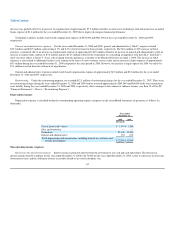Overstock.com 2009 Annual Report Download - page 58
Download and view the complete annual report
Please find page 58 of the 2009 Overstock.com annual report below. You can navigate through the pages in the report by either clicking on the pages listed below, or by using the keyword search tool below to find specific information within the annual report.
Table of Contents
in either direct or fulfillment partner revenue, depending on whether the product is shipped from our warehouses or from a fulfillment partner.
O.biz
In October 2009, we introduced O.biz, a website where customers and businesses can shop for bulk and business related items, offering manufacturers,
distributors and other retailers an alternative sales channel for liquidating their inventory. Revenue generated from our O.biz website is included in either
direct or fulfillment partner revenue, depending on whether the product is shipped from our warehouses or from a fulfillment partner.
Critical Accounting Policies and Estimates
The preparation of financial statements in conformity with generally accepted accounting principles of the United States ("GAAP") requires estimates
and assumptions that affect the reported amounts of assets and liabilities, revenues and expenses, and related disclosures of contingent assets and liabilities in
the consolidated financial statements and accompanying notes. The Securities and Exchange Commission ("SEC") has defined a company's critical
accounting policies and estimates as the ones that are most important to the portrayal of the company's financial condition and results of operations, and which
require the company to make its most difficult and subjective judgments, often as a result of the need to make estimates of matters that are inherently
uncertain. Based on this definition, we have identified the critical accounting policies and judgments addressed below. We also have other key accounting
policies, which involve the use of estimates, judgments, and assumptions that are significant to understanding our results. For additional information, see
Item 15 of Part IV, "Financial Statements"—Note 2—"Summary of Significant Accounting Policies." Although we believe that our estimates, assumptions,
and judgments are reasonable, they are based upon information presently available. Actual results may differ significantly from these estimates under different
assumptions, judgments, or conditions. Our critical accounting policies are as follows:
revenue recognition;
estimating valuation allowances and accrued liabilities (specifically, the allowances for returns, credit card chargebacks, doubtful accounts and
obsolete and damaged inventory);
internal use software and website development (acquired and developed internally);
accounting for income taxes;
valuation of long-lived and intangible assets and goodwill;
stock-based compensation; and
loss contingencies.
Revenue recognition
We derive our revenue primarily from two sources: direct revenue and fulfillment partner revenue, including listing fees and commissions collected from
products being listed and sold through the Auctions tab of our Website as well as advertisement revenue derived from our cars and real estate listing business,
and from advertising on our shopping pages. We have organized our operations into two principal segments based on the primary source of revenue: Direct
revenue and Fulfillment partner revenue (see Item 15 of Part IV, "Financial Statements"—Note 25—"Business Segments").
Revenue is recognized when the following revenue recognition criteria are met: (1) persuasive evidence of an arrangement exists; (2) delivery has
occurred or the service has been provided; (3) the
55
•
•
•
•
•
•
•


